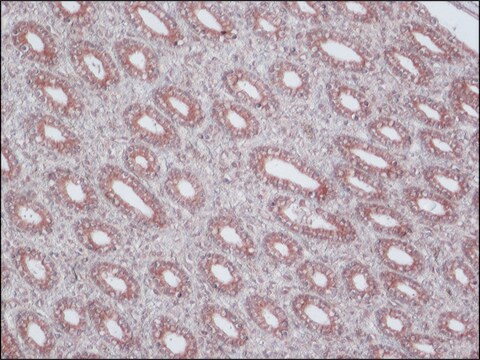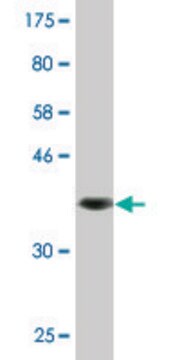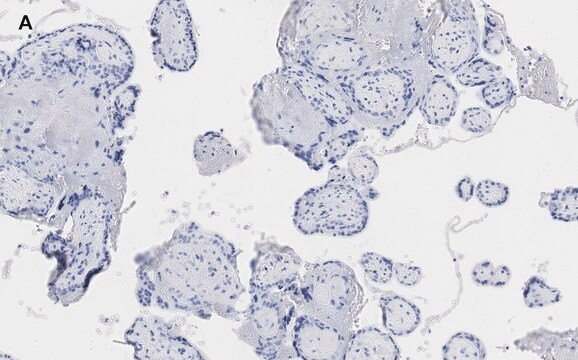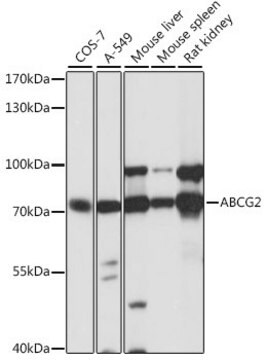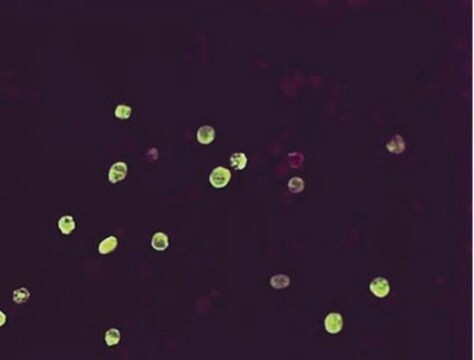MAB4145
Anti-BCRP Antibody, clone BXP-34
culture supernatant, clone BXP-34, Chemicon®
Synonyme(s) :
Breast Cancer Resistance Protein, Placenta-specific ATP Binding Cassette Transporter, ATP-binding Cassette, Sub Family G, member 2 (ABCG2)
About This Item
Produits recommandés
Source biologique
mouse
Niveau de qualité
Forme d'anticorps
culture supernatant
Type de produit anticorps
primary antibodies
Clone
BXP-34, monoclonal
Espèces réactives
human
Fabricant/nom de marque
Chemicon®
Technique(s)
immunocytochemistry: suitable
immunohistochemistry: suitable
Entrée
sample type hematopoietic stem cell(s)
sample type neural stem cell(s)
Isotype
IgG1
Adéquation
not suitable for Western blot
not suitable for immunohistochemistry (Paraffin)
Numéro d'accès NCBI
Numéro d'accès UniProt
Conditions d'expédition
wet ice
Modification post-traductionnelle de la cible
unmodified
Informations sur le gène
human ... ABCG2(9429)
Description générale
Spécificité
Immunogène
Application
Immunohistochemistry: 1:20 on acetone fixed frozen tissue sections
Not suitable for paraffin-embedded tissues or for Western blotting
Optimal working dilutions must be determined by end user.
Stem Cell Research
Hematopoietic Stem Cells
Description de la cible
Forme physique
Stockage et stabilité
Remarque sur l'analyse
MCF-7 cells
Autres remarques
Informations légales
Clause de non-responsabilité
Vous ne trouvez pas le bon produit ?
Essayez notre Outil de sélection de produits.
En option
Code de la classe de stockage
10 - Combustible liquids
Classe de danger pour l'eau (WGK)
WGK 1
Certificats d'analyse (COA)
Recherchez un Certificats d'analyse (COA) en saisissant le numéro de lot du produit. Les numéros de lot figurent sur l'étiquette du produit après les mots "Lot" ou "Batch".
Déjà en possession de ce produit ?
Retrouvez la documentation relative aux produits que vous avez récemment achetés dans la Bibliothèque de documents.
Notre équipe de scientifiques dispose d'une expérience dans tous les secteurs de la recherche, notamment en sciences de la vie, science des matériaux, synthèse chimique, chromatographie, analyse et dans de nombreux autres domaines..
Contacter notre Service technique